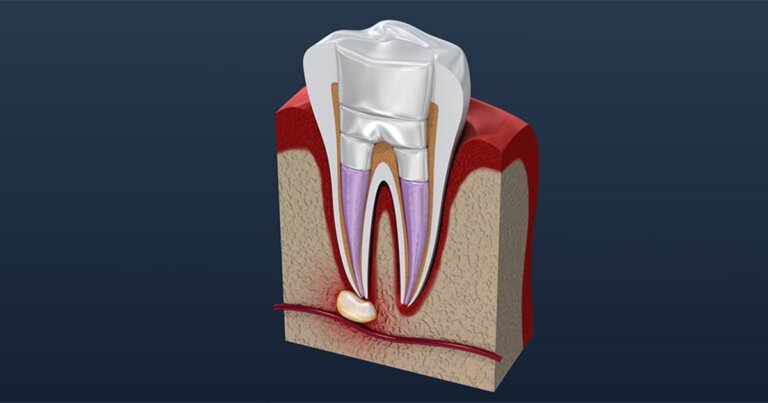Root Canal Treatment Post-Operative Instructions

What You Should Do After Root Canal Treatment For A Successful Recovery
Root canal treatment is a common dental procedure to save a painful tooth. After your root canal treatment, it is important to follow these post-visit instructions to ensure an uneventful recovery period.
If you have not had your root canal treatment appointment yet, please read our pre-visit instructions.
Food
- Soft diet, e.g. scrambled eggs, mashed potatoes, smoothies, yoghurt, soft rice, porridge; or if you are feeling confident, you may eat more regular foods on the other side of the mouth.
- The root canal treated is fragile until a permanent filling/dental crown is placed on it; heavy biting force can break the tooth.
Oral Hygiene
- In anticipation of your upcoming root canal treatment appointment, please keep the area of the affected tooth as clean as possible without causing pain.
- Brush At Least Twice A Day: Conventional wisdom says that you should brush at least twice a day; once in the morning and once before you go to bed. Two times a day is a good rule of thumb. But ideally, you should brush right after a meal. This is to maximize the amount of time your teeth stay clean between meals.
- When You Cannot Brush Your Teeth, Rinse With Water Or Mouthwash: It is sometimes not practical to be brushing after every meal. You may be busy at work or at school during your day and cannot find time to brush or floss. If this is the case, at least rinse with water or mouthwash to get as much food debris and taste out of your mouth. One brand of mouthwash that we highly recommend is the Crest Pro-Health Densify Anticavity Fluoride Mouth Rinse
- Consider Upgrading Your Toothbrush: Ensure you are using a soft-bristled toothbrush to clean the area around the tooth to be root canal treated, as they are gentler on the tooth and less likely to cause damage or irritation to the gum tissue around it. One brand of toothbrush that we highly recommend is the Curaprox CS5460 Ultra Soft Swiss Toothbrush. Also consider upgrading to an electric toothbrush, which can be more effective at removing plaque and bacteria from the tooth to be root canal treated and surrounding teeth. One brand of electric toothbrush that we highly recommend is the Philips Sonicare Protectiveclean 6100.
- Floss Daily: Flossing is critical to remove plaque and food particles that may accumulate around the tooth to be root canal treated. Ideally you should be flossing every time you brush, but once a day is the bare minimum. We recommend GUM ButlerWeave Dental Floss. If you have difficulty using regular string floss, consider using dental flossers (such as Sunstar 888JC GUM Advanced Care Flossers) or interdental brushes (GUM Proxabrush) to clean the space between the tooth to be root canal treated and the adjacent teeth.
- Buy A Water Flosser: We highly recommend you purchase a Water Flosser and to use it daily in addition to regular flossing; the Water Flosser will flush out debris missed by floss and toothbrush. Ideally you should be water flossing every time you brush, but once a day is the bare minimum. One brand that we highly recommend is the Waterpik Aquarius Water Flosser
- Use An Anticavity Antibacterial Mouthwash Daily: Rinse your mouth with a high fluoride, anticavity mouthwash specially formulated to reduce the risk of cavities forming under around your tooth to be root canal treated and to freshen your breath. Ideally you should be rinsing with mouthwash every time you brush, but once a day is the bare minimum. One brand that we highly recommend is Crest Pro-Health Densify Anticavity Fluoride Mouth Rinse.
- Use An Anticavity Toothpaste: Be sure to use a toothpaste that has a unique formula that is high fluoride and will minimize the risk of new cavities forming around your tooth to be root canal treated, and promote gum health. One brand that we highly recommend is the Colgate PreviDent 5000 ppm Booster Plus Toothpaste.
Pain Control
- It is not unusual to feel slight pain or discomfort immediately after root canal treatment.
- You are also welcome to use over the counter pain relievers such as ibuprofen (Advil) or acetaminophen (Tylenol). Ask your dentist what dosage is right for you, but if you do not have a pre-existing medical condition of allergies, 1000mg acetaminophen (Tylenol) with 600mg ibuprofen (Advil) every 4-6 hours or as needed is a very powerful combination.
Numbness
- Any numbness you’re experiencing from the local anesthetic will last approximately two to three hours. Until the anesthetic wears off, be careful not to drink hot liquids or bite your lip, cheek or tongue.
Difficult Jaw Opening
- Local anesthetic injections by their very nature cause injury to the muscles of the jaw, and can result in temporary difficulty opening your jaws wide, pain, and muscle spasm of the affected side. This is a condition called “myogenic trismus secondary to dental local anesthetic injection”. Follow this link to learn more about how to manage myogenic trismus at home.
Medications
- Take all your normal medications as directed that you normally would, unless otherwise advised by your doctor or dentist. If there have been any recent changes in your medications or health status, please inform your dentist.
Antibiotics
- If your dentist prescribed antibiotics for you, take them as prescribed until finished. If you start feeling worse after the third day following surgery, or if you start having a difficult time swallowing or breathing, contact your dentist or seek help at your local hospital emergency room.
Have Questions?
If you have any additional questions or concerns, please contact us.

